Editorial board
Editors of this journal work on a purely voluntary basis without remuneration in line with the not-for-profit philosophy of the EGU.
Executive editors
Hartwig Harder
Max Planck Institut für Chemie - Otto Hahn Institut
Airchemistry
Airchemistry
Germany
Marloes Penning de Vries
University of Twente
Faculty of Geo-information and remote sensing
Faculty of Geo-information and remote sensing
Netherlands
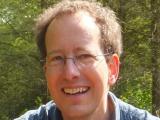
Andreas Richter
University of Bremen
Institute of Environmental Physics (IUP)
Physics
Institute of Environmental Physics (IUP)
Physics
Germany

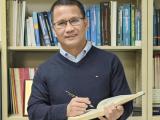
Mingjin Tang
Guangzhou Institute of Geochemistry
China

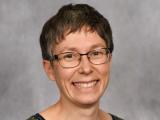
Rebecca Washenfelder
University of Colorado
Cooperative Institute for Research in Environmental Sciences
Cooperative Institute for Research in Environmental Sciences
United States

Senior editor
Simone Lolli
Italian National Research Council (CNR)
Italy
Editors
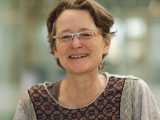
Ilse Aben
SRON Netherlands Institute for Space Research
Earth
Earth
Netherlands
Subject areas
Subject areas
Gases

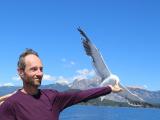
Peter Alexander
IFIBA - CONICET Ciudad Universitaria
Physics
Physics
Argentina
Subject areas
Subject areas
Others (Wind, Precipitation, Temperature, etc.)

Vassilis Amiridis
Special Research Funds Account of the National Observatory of Athens
IAASARS
IAASARS
Greece
Subject areas
Subject areas
Aerosols
Clouds
Clouds
Maria Dolores Andrés Hernández
University of Bremen
Institute of Environmental Physics (IUP)
Institute of Environmental Physics (IUP)
Germany
Subject areas
Subject areas
Gases
Eric C. Apel
National Center for Atmospheric Research
Atmospheric Chemistry Division
Atmospheric Chemistry Division
United States
Subject areas
Subject areas
Gases
Tim Arnold
Lund University
Department of Physical Geography and Ecosystem Sciences
Department of Physical Geography and Ecosystem Sciences
Sweden
Subject areas
Subject areas
Gases
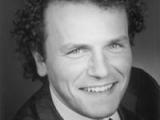
Gerd Baumgarten
Leibniz Institute of Atmospheric Physics at the University Rostock
Optical and rocket soundings
Optical and rocket soundings
Germany
Subject areas
Subject areas
Aerosols
Gases
Others (Wind, Precipitation, Temperature, etc.)
Gases
Others (Wind, Precipitation, Temperature, etc.)

Steffen Beirle
MPI Chemie Mainz
Satellite remote sensing
Satellite remote sensing
Germany
Subject areas
Subject areas
Aerosols
Clouds
Gases
Clouds
Gases
Alexis Berne
EPFL - Swiss Federal Institute of Technology Lausanne
Environmental Remote Sensing Laboratory
Environmental Remote Sensing Laboratory
Switzerland
Subject areas
Subject areas
Clouds
Others (Wind, Precipitation, Temperature, etc.)
Others (Wind, Precipitation, Temperature, etc.)
Laura Bianco
University of Colorado, Boulder, and NOAA
Physical Science Division
Physical Science Division
United States
Subject areas
Subject areas
Others (Wind, Precipitation, Temperature, etc.)
Folkert Boersma
KNMI and Wageningen University
Satellite Observations
Satellite Observations
Netherlands
Subject areas
Subject areas
Aerosols
Clouds
Gases
Clouds
Gases
Christian Brümmer
Thünen-Institute
Climate-Smart Agriculture
Climate-Smart Agriculture
Germany
Subject areas
Subject areas
Gases
Others (Wind, Precipitation, Temperature, etc.)
Others (Wind, Precipitation, Temperature, etc.)
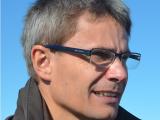
Dominik Brunner
Empa, Swiss Federal Laboratories for Materials Science and Technology
Laboratory for Air Pollution/Environmental Technology
Laboratory for Air Pollution/Environmental Technology
Switzerland
Subject areas
Subject areas
Gases

Brigitte Buchmann
Empa
Institute of Condensed Matter and Complex Systems
Institute of Condensed Matter and Complex Systems
Switzerland
Subject areas
Subject areas
Gases
Anthony Bucholtz
Naval Postgraduate School
NPS-CIRPAS Research Aviation Facility
Meteorology
NPS-CIRPAS Research Aviation Facility
Meteorology
United States
Subject areas
Subject areas
Aerosols
Clouds
Others (Wind, Precipitation, Temperature, etc.)
Clouds
Others (Wind, Precipitation, Temperature, etc.)
Andre Butz
Heidelberg University
Institute of Environmental Physics
Physics and Astronomy
Institute of Environmental Physics
Physics and Astronomy
Germany
Subject areas
Subject areas
Aerosols
Clouds
Gases
Clouds
Gases
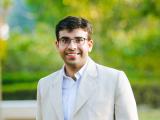
Abhishek Chatterjee
NASA JPL, Caltech
Earth Science
Earth Science
United States
Subject areas
Subject areas
Gases

Jorge Luis Chau
Leibniz Institute of Atmospheric Physics
Radar Remote Sensing Department
Radar Remote Sensing Department
Germany
Subject areas
Subject areas
Others (Wind, Precipitation, Temperature, etc.)
Huilin Chen
Nanjing University
School of Atmospheric Sciences
School of Atmospheric Sciences
China
Subject areas
Subject areas
Gases
Domenico Cimini
CNR-IMAA
Italy
Subject areas
Subject areas
Clouds
Gases
Others (Wind, Precipitation, Temperature, etc.)
Gases
Others (Wind, Precipitation, Temperature, etc.)
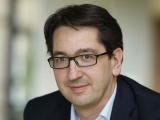
Joachim Curtius
Goethe University Frankfurt
Institute for Atmospheric und Environmental Sciences
Institute for Atmospheric und Environmental Sciences
Germany
Subject areas
Subject areas
Aerosols

Nicholas Deutscher
University of Wollongong
Australia
Sandip Dhomse
University of Leeds
School of Earth and Environmental Sciences
National Centre of Earth Observation
School of Earth and Environmental Sciences
National Centre of Earth Observation
United Kingdom
Subject areas
Subject areas
Aerosols
Gases
Gases
Cléo Quaresma Dias-Junior
Federal Institute of Education, Science and Tecnology of Pará
Physics
Physics
Physics
Physics
Brazil
Subject areas
Subject areas
Gases
Others (Wind, Precipitation, Temperature, etc.)
Others (Wind, Precipitation, Temperature, etc.)
Piero Di Carlo
University of Chieti-Pescara
Italy
Subject areas
Subject areas
Gases
Russell Dickerson
University of Maryland
Department of Atmospheric and Oceanic Science (AOSC)
Department of Atmospheric and Oceanic Science (AOSC)
United States
Subject areas
Subject areas
Aerosols
Gases
Gases
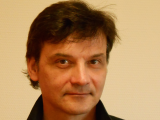
Oleg Dubovik
CNRS, Universite de Lille
Laboratoire d'Optique Atmosphérique
Laboratoire d'Optique Atmosphérique
France
Subject areas
Subject areas
Aerosols

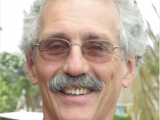
Thomas Eck
University of Maryland Baltimore County
GSFC / GESTAR II
GSFC / GESTAR II
United States
Subject areas
Subject areas
Aerosols

Dmitry Efremenko
German Aerospace Center
Atmospheric processors
Atmospheric processors
Germany
Subject areas
Subject areas
Aerosols
Clouds
Gases
Clouds
Gases
André Ehrlich
Leipzig University
Institute for Meteorology
Institute for Meteorology
Germany
Subject areas
Subject areas
Clouds
Others (Wind, Precipitation, Temperature, etc.)
Others (Wind, Precipitation, Temperature, etc.)
Daniela Famulari
National Research Council of Italy (CNR)
IBE - Institute for Bioeconomy
IBE - Institute for Bioeconomy
Italy
Subject areas
Subject areas
Gases
Others (Wind, Precipitation, Temperature, etc.)
Others (Wind, Precipitation, Temperature, etc.)
Dietrich G. Feist
Deutsches Zentrum für Luft- und Raumfahrt (DLR)
Institut für Physik der Atmosphäre
Institut für Physik der Atmosphäre
Germany
Subject areas
Subject areas
Gases
Wiebke Frey
Wageningen University and Research
Meteorology and Air Quality
Meteorology and Air Quality
Netherlands
Subject areas
Subject areas
Clouds
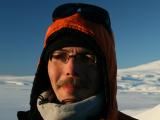
Udo Friess
University of Heidelberg
Institute of Environmental Physics
Institute of Environmental Physics
Germany
Subject areas
Subject areas
Aerosols
Gases
Gases

Hendrik Fuchs
Forschungszentrum Jülich GmbH
ICE-3 Troposphere
ICE-3 Troposphere
Germany
Subject areas
Subject areas
Gases
Others (Wind, Precipitation, Temperature, etc.)
Others (Wind, Precipitation, Temperature, etc.)
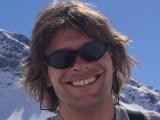
Bernd Funke
Instituto de Astrofísica de Andalucía (CSIC)
Glorieta de la Astronomía
Glorieta de la Astronomía
Spain
Subject areas
Subject areas
Gases
Others (Wind, Precipitation, Temperature, etc.)
Others (Wind, Precipitation, Temperature, etc.)

Meng Gao
Hong Kong Baptist University
Department of Geography
Department of Geography
Hong Kong
Subject areas
Subject areas
Aerosols
Gases
Others (Wind, Precipitation, Temperature, etc.)
Gases
Others (Wind, Precipitation, Temperature, etc.)
Jörg Gumbel
Stockholm University
Department of Meteorology (MISU)
Department of Meteorology (MISU)
Sweden
Subject areas
Subject areas
Aerosols
Clouds
Gases
Clouds
Gases
Thomas F. Hanisco
NASA GSFC
Code 614
Code 614
United States
Subject areas
Subject areas
Gases
Reem Hannun
NASA Ames Research Center
United States
Subject areas
Subject areas
Gases
Hartwig Harder
Max Planck Institut für Chemie - Otto Hahn Institut
Airchemistry
Airchemistry
Germany
Subject areas
Subject areas
Gases
Others (Wind, Precipitation, Temperature, etc.)
Others (Wind, Precipitation, Temperature, etc.)
Frank Hase
Karlsruhe Institute of Technology (KIT)
Institute of Meteorology and Climate Research (IMK-ASF)
Institute of Meteorology and Climate Research (IMK-ASF)
Germany
Subject areas
Subject areas
Gases
Others (Wind, Precipitation, Temperature, etc.)
Others (Wind, Precipitation, Temperature, etc.)
Otto Hasekamp
Space Research Organisation Netherlands
Netherlands
Subject areas
Subject areas
Aerosols
Gases
Gases
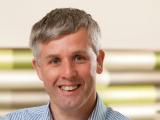
Dwayne Heard
University of Leeds
School of Chemistry
School of Chemistry
School of Chemistry
School of Chemistry
United Kingdom
Subject areas
Subject areas
Gases

Hartmut Herrmann
Leibniz Institute for Tropospheric Research
Atmospheric Chemistry Department (ACD)
Atmospheric Chemistry Department (ACD)
Germany
Subject areas
Subject areas
Aerosols
Clouds
Clouds
Lars Hoffmann
Forschungszentrum Jülich
Jülich Supercomputing Centre
Jülich Supercomputing Centre
Germany
Subject areas
Subject areas
Gases
Others (Wind, Precipitation, Temperature, etc.)
Others (Wind, Precipitation, Temperature, etc.)
Yoshiteru Iinuma
Okinawa Institute of Science and Technology
Chemistry
Chemistry
Japan
Subject areas
Subject areas
Aerosols
Christof Janssen
CNRS / Sorbonne Université
MONARIS
MONARIS
France
Subject areas
Subject areas
Gases
Others (Wind, Precipitation, Temperature, etc.)
Others (Wind, Precipitation, Temperature, etc.)
Hiren Jethva
Morgan State University
GESTAR-II
GESTAR-II
United States
Subject areas
Subject areas
Aerosols
Clouds
Clouds
Heikki Junninen
University of Tartu
Institute of Physics
Laboratory of Environmental Physics
Institute of Physics
Laboratory of Environmental Physics
Estonia
Subject areas
Subject areas
Aerosols
Gases
Gases
Zamin A. Kanji
ETH - Zurich
Atmosphere and Climate Sciences
Environmental Systems Sciences
Atmosphere and Climate Sciences
Environmental Systems Sciences
Switzerland
Subject areas
Subject areas
Aerosols
Clouds
Clouds
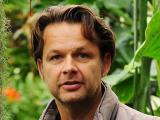
Frank Keppler
University of Heidelberg
Institute of Earth Sciences
Institute of Earth Sciences
Germany
Subject areas
Subject areas
Gases

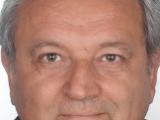
Alexander Kokhanovsky
Marburg University
Department of Geography
Department of Geography
Germany
Subject areas
Subject areas
Aerosols
Clouds
Clouds

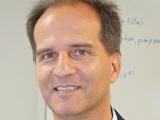
Pavlos Kollias
Stony Brook University
School of Marine and Atmospheric Sciences
Division of Atmospheric Sciences
School of Marine and Atmospheric Sciences
Division of Atmospheric Sciences
United States
Subject areas
Subject areas
Clouds
Others (Wind, Precipitation, Temperature, etc.)
Others (Wind, Precipitation, Temperature, etc.)

Natalya Kramarova
NASA/GSFC
United States
Subject areas
Subject areas
Gases
Karin Kreher
BK Scientific GmbH
Germany
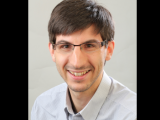
Gerrit Kuhlmann
Empa
Air Pollution / Environmental Technology
Air Pollution / Environmental Technology
Switzerland
Subject areas
Subject areas
Gases

Alyn Lambert
JPL CalTech
Microwave Atmospheric Science Group
Microwave Atmospheric Science Group
United States
Subject areas
Subject areas
Aerosols
Clouds
Gases
Clouds
Gases
Lok Lamsal
Bureau of Ocean Energy Management (BOEM)
United States
Subject areas
Subject areas
Aerosols
Clouds
Gases
Clouds
Gases
Luca Lelli
German Aerospace Center (DLR)
Remote Sensing Technology Institute (IMF)
Remote Sensing Technology Institute (IMF)
Germany
Subject areas
Subject areas
Aerosols
Clouds
Gases
Clouds
Gases
Can Li
NASA Goddard Space Flight Center
Atmospheric Chemistry and Dynamics Laboratory
Atmospheric Chemistry and Dynamics Laboratory
United States
Subject areas
Subject areas
Aerosols
Gases
Gases
Cheng Liu
University of Science and Technology of China
University of Science and Technology of China
Department of Precision Machinery and Precision Instrumentation
University of Science and Technology of China
Department of Precision Machinery and Precision Instrumentation
China
Subject areas
Subject areas
Aerosols
Clouds
Gases
Others (Wind, Precipitation, Temperature, etc.)
Clouds
Gases
Others (Wind, Precipitation, Temperature, etc.)
Chao Liu
Nanjing University of Information Science & Technology
China
Subject areas
Subject areas
Aerosols
Clouds
Gases
Clouds
Gases
Simone Lolli
Italian National Research Council (CNR)
Italy
Subject areas
Subject areas
Aerosols
Clouds
Gases
Others (Wind, Precipitation, Temperature, etc.)
Clouds
Gases
Others (Wind, Precipitation, Temperature, etc.)
Diego Loyola
German Aerospace Center (DLR)
Remote Sensing Technology Institute (IMF)
Remote Sensing Technology Institute (IMF)
Germany
Subject areas
Subject areas
Clouds
Gases
Gases
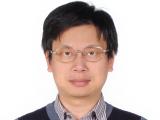
Keding Lu
Peking University
College of Environmental Sciences and Engineering
Environmental Sciences
College of Environmental Sciences and Engineering
Environmental Sciences
China
Subject areas
Subject areas
Gases

Maximilian Maahn
Leipzig University
Leipzig Institute for Meteorology
Leipzig Institute for Meteorology
Germany
Subject areas
Subject areas
Clouds
Others (Wind, Precipitation, Temperature, etc.)
Others (Wind, Precipitation, Temperature, etc.)
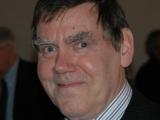
Willy Maenhaut
Retired from Retired from Ghent University
Chemistry
Chemistry
Belgium
Subject areas
Subject areas
Aerosols

Szymon Malinowski
University of Warsaw
Institute of Geophysics
Faculty of Physics
Institute of Geophysics
Faculty of Physics
Poland
Subject areas
Subject areas
Clouds
Bernhard Mayer
Ludwig-Maximilians-Universität
Lehrstuhl fuer Experimentelle Meteorologie
Lehrstuhl fuer Experimentelle Meteorologie
Germany
Subject areas
Subject areas
Clouds
Linlu Mei
The International Research Center of Big Data for Sustainable Development Goals
China
Subject areas
Subject areas
Aerosols
Clouds
Others (Wind, Precipitation, Temperature, etc.)
Clouds
Others (Wind, Precipitation, Temperature, etc.)
Marco Milla
Pontificia Universidad Católica del Perú
Electrical and Electronic Engineering
Electrical and Electronic Engineering
Peru
Subject areas
Subject areas
Others (Wind, Precipitation, Temperature, etc.)
Griša Močnik
University of Nova Gorica
Center for Atmospheric Research
Center for Atmospheric Research
Slovenia
Subject areas
Subject areas
Aerosols
Luca Mortarini
Università degli Studi di Milano
Department of Earth Sciences "Ardito Desio"
Department of Earth Sciences "Ardito Desio"
Italy
Subject areas
Subject areas
Gases
Others (Wind, Precipitation, Temperature, etc.)
Others (Wind, Precipitation, Temperature, etc.)
S. Joseph Munchak
Tomorrow IO
United States
Subject areas
Subject areas
Others (Wind, Precipitation, Temperature, etc.)
Justus Notholt
University of Bremen
Institute of Environmental Physics (IUP)
Physics
Institute of Environmental Physics (IUP)
Physics
Germany
Subject areas
Subject areas
Gases
Anna Novelli
Forschungszentrum Jülich
ICE-3
ICE-3
Germany
Subject areas
Subject areas
Gases
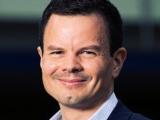
Peer Nowack
Karlsruhe Institute of Technology
Institute of Theoretical Informatics
Faculty of Informatics
Institute of Theoretical Informatics
Faculty of Informatics
Germany
Subject areas
Subject areas
Aerosols
Clouds
Gases
Others (Wind, Precipitation, Temperature, etc.)
Clouds
Gases
Others (Wind, Precipitation, Temperature, etc.)

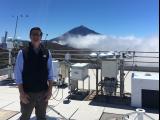
Edward Nowottnick
NASA GSFC
United States
Subject areas
Subject areas
Aerosols
Clouds
Clouds

Hans Osthoff
University of Calgary
Chemistry
Chemistry
Canada
Subject areas
Subject areas
Gases
Marloes Penning de Vries
University of Twente
Faculty of Geo-information and remote sensing
Faculty of Geo-information and remote sensing
Netherlands
Subject areas
Subject areas
Aerosols
Clouds
Clouds
Daniel Perez-Ramirez
University of Granada
Spain
Subject areas
Subject areas
Aerosols
Ulrich Platt
Retired from Retired from University of Heidelberg
Institute of Environmental Physics
Institute of Environmental Physics
Germany
Subject areas
Subject areas
Gases
Francis Pope
University of Birmingham
School of Geography, Earth and Environmental Sciences
School of Geography, Earth and Environmental Sciences
School of Geography, Earth and Environmental Sciences
School of Geography, Earth and Environmental Sciences
United Kingdom
Subject areas
Subject areas
Aerosols
Gases
Gases
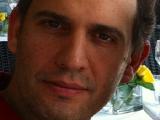
Marcos Portabella
Institut de Ciències del Mar (ICM - CSIC)
Department of Physical and Technological Oceanography
Department of Physical and Technological Oceanography
Spain
Subject areas
Subject areas
Others (Wind, Precipitation, Temperature, etc.)

Albert Presto
Carnegie Mellon University
CAPS
Mechanical Engineering
CAPS
Mechanical Engineering
United States
Subject areas
Subject areas
Aerosols
Gases
Gases
Jean-Philippe Putaud
Joint Research Centre, European Commission
Institute for Environment and Sustainability
Institute for Environment and Sustainability
Italy
Subject areas
Subject areas
Aerosols
Markus Rapp
DLR (German Aerospace Center)
Institute of Atmospheric Physics
Institute of Atmospheric Physics
Germany
Subject areas
Subject areas
Aerosols
Others (Wind, Precipitation, Temperature, etc.)
Others (Wind, Precipitation, Temperature, etc.)

Andreas Richter
University of Bremen
Institute of Environmental Physics (IUP)
Physics
Institute of Environmental Physics (IUP)
Physics
Germany
Subject areas
Subject areas
Gases

Thomas Röckmann
Utrecht University
Institute for Marine and Atmospheric Research Utrecht
Physics
Institute for Marine and Atmospheric Research Utrecht
Physics
Netherlands
Subject areas
Subject areas
Gases
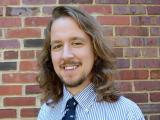
Andrew Sayer
GESTAR II / University of Maryland Baltimore County / NASA
mail code 616, Ocean Ecology Laboratory
mail code 616, Ocean Ecology Laboratory
United States
Subject areas
Subject areas
Aerosols
Clouds
Clouds

Sebastian Schmidt
University of Colorado
Laboratory for Atmospheric and Space Physics
Laboratory for Atmospheric and Space Physics
United States
Subject areas
Subject areas
Aerosols
Clouds
Clouds
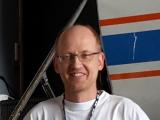
Johannes Schneider
Max Planck Institute for Chemistry
Aerosol Chemistry Department
Aerosol Chemistry Department
Germany
Subject areas
Subject areas
Aerosols

Robyn Schofield
University of Melbourne
School of Earth Sciences
School of Earth Sciences
Australia
Subject areas
Subject areas
Aerosols
Clouds
Gases
Clouds
Gases

William R. Simpson
University of Alaska Fairbanks
Geophysical Institute
Department of Chemistry
Geophysical Institute
Department of Chemistry
United States
Subject areas
Subject areas
Aerosols
Gases
Gases

Piet Stammes
Royal Netherlands Meteorological Institute (KNMI)
R&D Satellite Observations Department
R&D Satellite Observations Department
Netherlands
Subject areas
Subject areas
Aerosols
Clouds
Clouds

Gabriele Stiller
Karlsruhe Institute of Technology
Institut für Meteorologie und Klimaforschung (IMKASF)
Institut für Meteorologie und Klimaforschung (IMKASF)
Germany
Subject areas
Subject areas
Gases

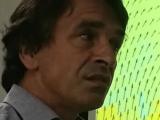
Ad Stoffelen
Royal Netherlands Meteorological Institute (KNMI)
R&D Satellites
R&D Satellites
Netherlands
Subject areas
Subject areas
Aerosols
Clouds
Gases
Others (Wind, Precipitation, Temperature, etc.)
Clouds
Gases
Others (Wind, Precipitation, Temperature, etc.)

Fred Stroh
Forschungszentrum Jülich GmbH
Institute for Energy and Climate Research (IEK-7)
Institute for Energy and Climate Research (IEK-7)
Germany
Subject areas
Subject areas
Gases
Kimberly Strong
University of Toronto
Department of Physics
Department of Physics
Canada
Subject areas
Subject areas
Gases
Jochen Stutz
University of California Los Angeles
Department of Atmospheric and Oceanic Sciences
Department of Atmospheric and Oceanic Sciences
United States
Subject areas
Subject areas
Gases
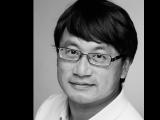
Hang Su
Institute of Atmospheric Physics CAS
China
Subject areas
Subject areas
Aerosols
Clouds
Gases
Clouds
Gases

John Sullivan
NASA Goddard Space Flight Center
Atmospheric Chemistry and Dynamics Laboratory
Atmospheric Chemistry and Dynamics Laboratory
United States
Subject areas
Subject areas
Gases
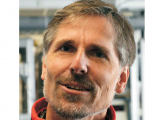
Ralf Sussmann
Karlsruhe Institute of Technology
IMK-IFU
IMK-IFU
Germany
Subject areas
Subject areas
Gases


Mingjin Tang
Guangzhou Institute of Geochemistry
China
Subject areas
Subject areas
Aerosols
Gases
Gases

Troy Thornberry
NOAA Chemical Sciences Laboratory
United States
Subject areas
Subject areas
Aerosols
Clouds
Gases
Clouds
Gases
Darin Toohey
University of Colorado
Department of Atmospheric and Oceanic Sciences
Department of Atmospheric and Oceanic Sciences
United States
Subject areas
Subject areas
Aerosols
Gases
Gases
Omar Torres
NASA Goddard Space Flight Center
United States
Subject areas
Subject areas
Aerosols
Roeland Van Malderen
Royal Meteorological Institute of Belgium
Observations
Observations
Belgium
Subject areas
Subject areas
Gases
Others (Wind, Precipitation, Temperature, etc.)
Others (Wind, Precipitation, Temperature, etc.)
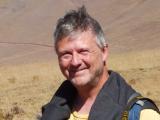
Michel Van Roozendael
Belgium
Subject areas
Subject areas
Aerosols
Gases
Gases

Daniel Varon
MIT
Aeronautics and Astronautics
Aeronautics and Astronautics
United States
Subject areas
Subject areas
Gases
Rainer Volkamer
University of Colorado at Boulder
Department of Chemistry & CIRES
Department of Chemistry & CIRES
United States
Subject areas
Subject areas
Aerosols
Gases
Gases

Marc von Hobe
Forschungszentrum Jülich GmbH
ICE-4
ICE-4
Germany
Subject areas
Subject areas
Gases

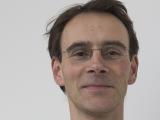
Christian von Savigny
University of Greifswald
Institute of Physics
Institute of Physics
Germany
Subject areas
Subject areas
Aerosols
Clouds
Gases
Clouds
Gases

Leonie von Terzi
Ludwig-Maximillians University Munich
Lehrstuhl für Experimentelle Meteorologie
Physics
Lehrstuhl für Experimentelle Meteorologie
Physics
Germany
Subject areas
Subject areas
Clouds
Others (Wind, Precipitation, Temperature, etc.)
Others (Wind, Precipitation, Temperature, etc.)
Gianfranco Vulpiani
Department of Civil Protection - Presidency of the Council of Ministers
Civil Protection
Civil Protection
Italy
Subject areas
Subject areas
Clouds
Others (Wind, Precipitation, Temperature, etc.)
Others (Wind, Precipitation, Temperature, etc.)
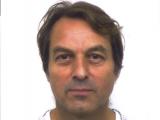
Thomas Wagner
Max Planck Institute for Chemistry
Satellite Remote Sensing Group
Satellite Remote Sensing Group
Germany
Subject areas
Subject areas
Aerosols
Clouds
Gases
Others (Wind, Precipitation, Temperature, etc.)
Clouds
Gases
Others (Wind, Precipitation, Temperature, etc.)

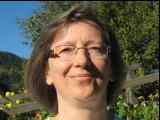
Ulla Wandinger
Leibniz Institute for Tropospheric Research (TROPOS)
Remote Sensing of Atmospheric Processes
Remote Sensing of Atmospheric Processes
Germany
Subject areas
Subject areas
Aerosols
Clouds
Others (Wind, Precipitation, Temperature, etc.)
Clouds
Others (Wind, Precipitation, Temperature, etc.)

Jun Wang
Univ. of Iowa
Department of Chemical and Biochemical Engineering
Department of Chemical and Biochemical Engineering
United States
Subject areas
Subject areas
Aerosols
Clouds
Others (Wind, Precipitation, Temperature, etc.)
Clouds
Others (Wind, Precipitation, Temperature, etc.)
Haichao Wang
Sun Yat-sen University
School of Atmospheric Sciences
School of Atmospheric Sciences
China
Subject areas
Subject areas
Gases
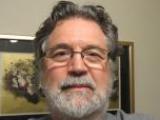
William Ward
University of New Brunswick
Department of Physics
Department of Physics
Canada
Subject areas
Subject areas
Aerosols
Gases
Others (Wind, Precipitation, Temperature, etc.)
Gases
Others (Wind, Precipitation, Temperature, etc.)


Rebecca Washenfelder
University of Colorado
Cooperative Institute for Research in Environmental Sciences
Cooperative Institute for Research in Environmental Sciences
United States
Subject areas
Subject areas
Aerosols
Gases
Gases

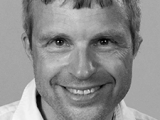
Mark Weber
University of Bremen
Institute of Environmental Physics (IUP)
FB1
Institute of Environmental Physics (IUP)
FB1
Germany
Subject areas
Subject areas
Gases

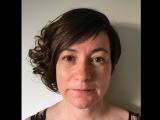
Lisa Whalley
University of Leeds
School of Chemistry
National Centre for Atmospheric Science
School of Chemistry
National Centre for Atmospheric Science
United Kingdom
Subject areas
Subject areas
Aerosols
Gases
Gases

Robin Wing
Leibniz Institute for Atmospheric Physics
Optics
Optics
Germany
Subject areas
Subject areas
Gases
Others (Wind, Precipitation, Temperature, etc.)
Others (Wind, Precipitation, Temperature, etc.)
Glenn Wolfe
NASA GSFC
United States
Subject areas
Subject areas
Gases
Pinhua Xie
Hefei Institutes of Physical Science, Chinese Academy of Sciences
Anhui Institute of Optics and Fine Mechanics
Anhui Institute of Optics and Fine Mechanics
China
Subject areas
Subject areas
Aerosols
Gases
Gases
Jian Xu
National Space Science Center
China
Subject areas
Subject areas
Aerosols
Clouds
Gases
Clouds
Gases
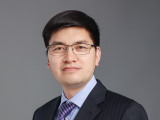
Yuanjian Yang
Nanjing University of Information Science and Technology
School of Atmospheric Physics
School of Atmospheric Physics
China
Subject areas
Subject areas
Aerosols
Clouds
Others (Wind, Precipitation, Temperature, etc.)
Clouds
Others (Wind, Precipitation, Temperature, etc.)

Jianhuai Ye
Southern University of Science and Technology
School of Environmental Science and Engineering
School of Environmental Science and Engineering
China
Subject areas
Subject areas
Aerosols
Gases
Gases
Wen Yi
University of Science and Technoloy of China
School of Earth and Space Science
Department of Geophysics and Planetary Sciences
School of Earth and Space Science
Department of Geophysics and Planetary Sciences
China
Subject areas
Subject areas
Others (Wind, Precipitation, Temperature, etc.)
Bin Yuan
Jinan University
Institute for Environmental and Climate Research
Institute for Environmental and Climate Research
China
Subject areas
Subject areas
Aerosols
Gases
Gases
Andreas Zahn
Karlsruhe Institute of Technology (KIT)
Institute of Meteorology and Climate Research (IMK)
Institute of Meteorology and Climate Research (IMK)
Germany
Subject areas
Subject areas
Gases
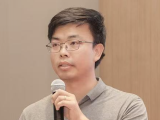
Zhao-Cheng Zeng
Peking University
School of Earth and Space Sciences
School of Earth and Space Sciences
China
Subject areas
Subject areas
Gases

Cuiqi Zhang
ETH Zürich
Institute for Atmospheric and Climate Science
D-USYS
Institute for Atmospheric and Climate Science
D-USYS
Switzerland
Subject areas
Subject areas
Aerosols
Clouds
Gases
Clouds
Gases

Chunlüe Zhou
Sun Yat-sen University
School of Geography and Planning
School of Geography and Planning
China
Subject areas
Subject areas
Aerosols
Clouds
Others (Wind, Precipitation, Temperature, etc.)
Clouds
Others (Wind, Precipitation, Temperature, etc.)


